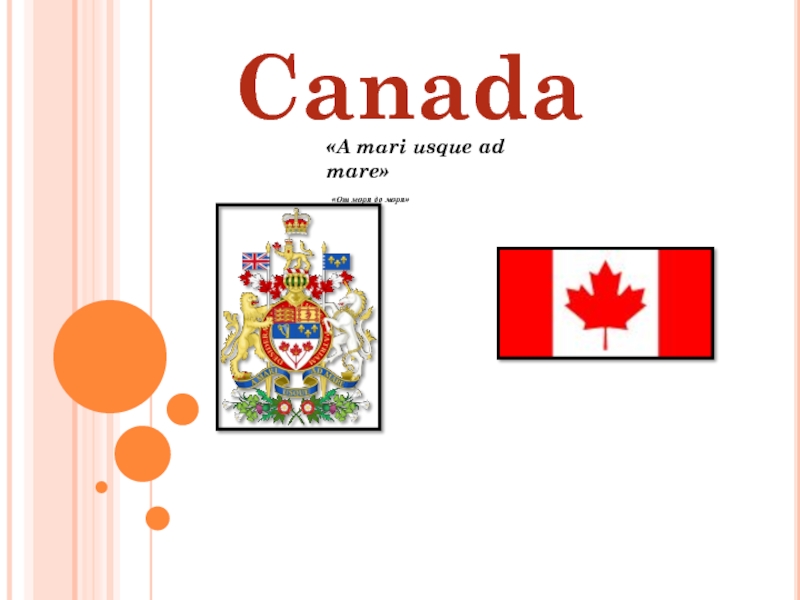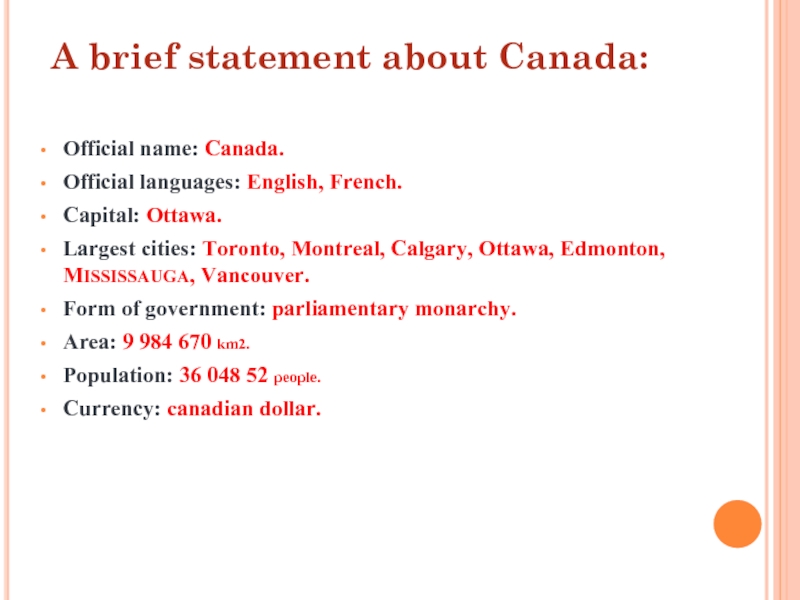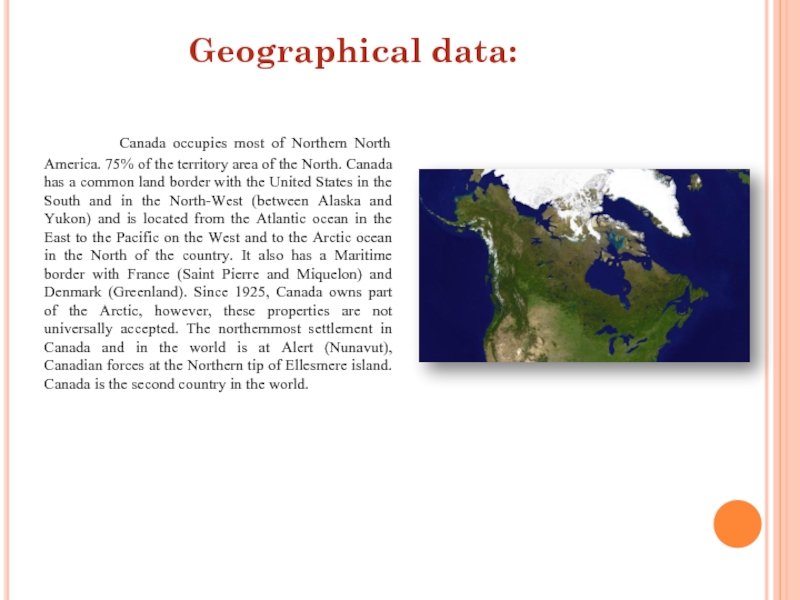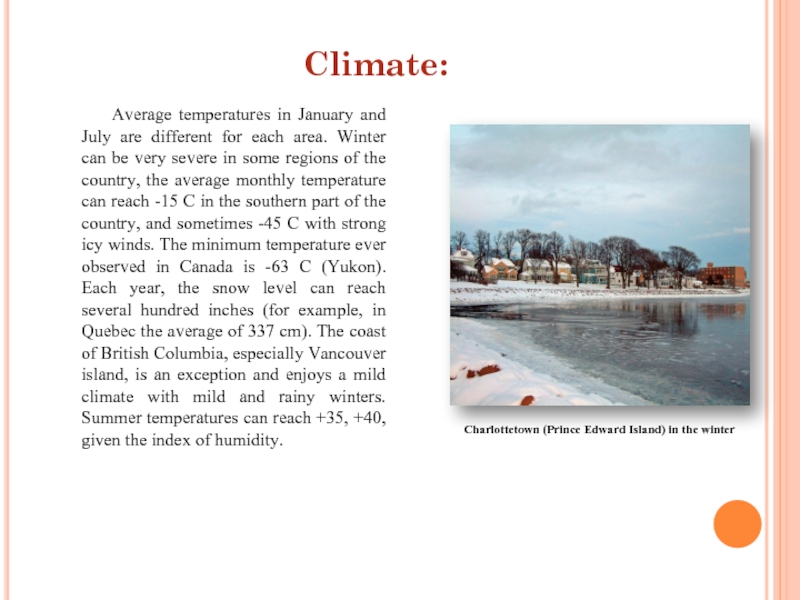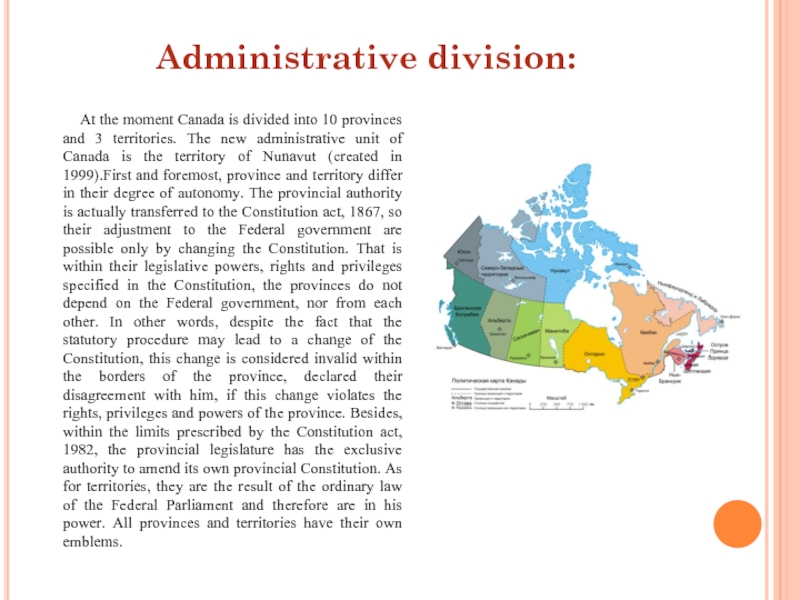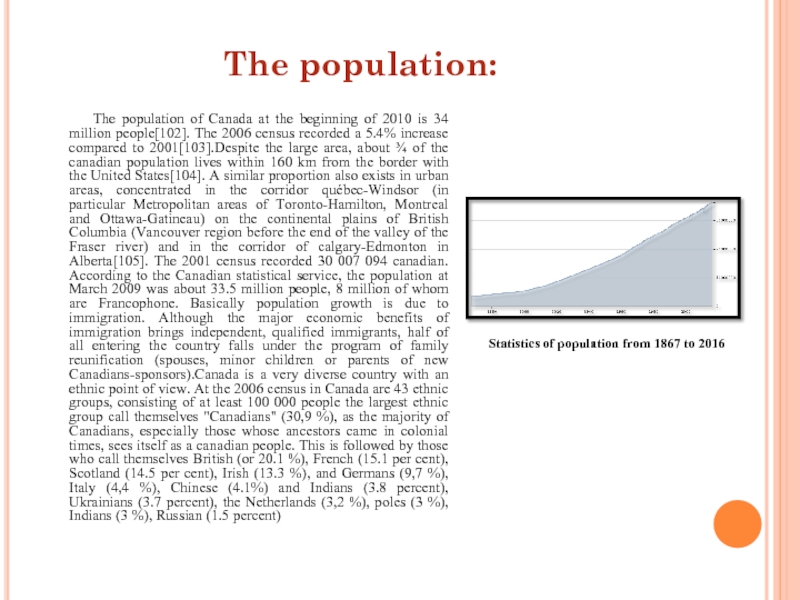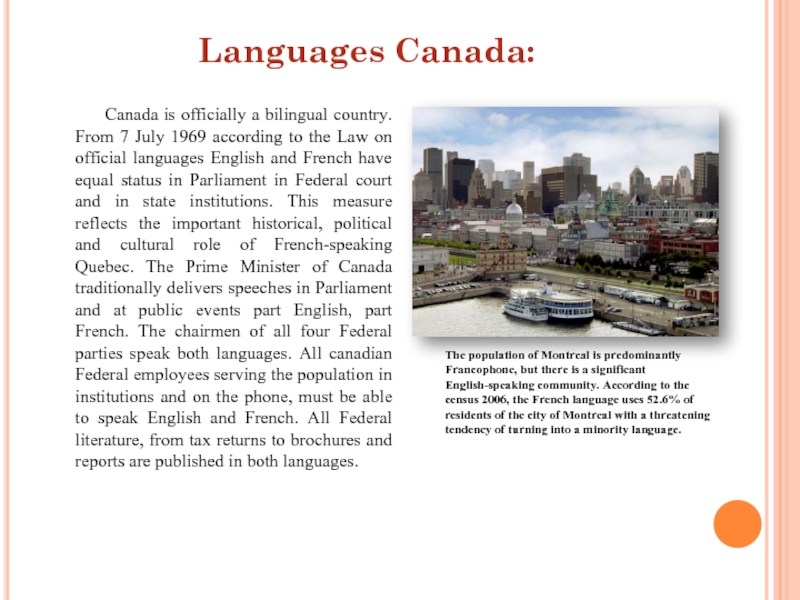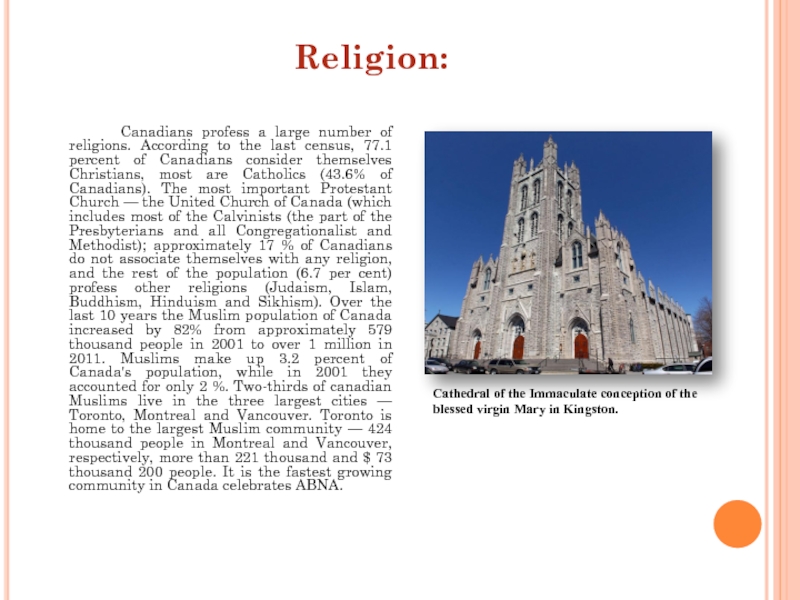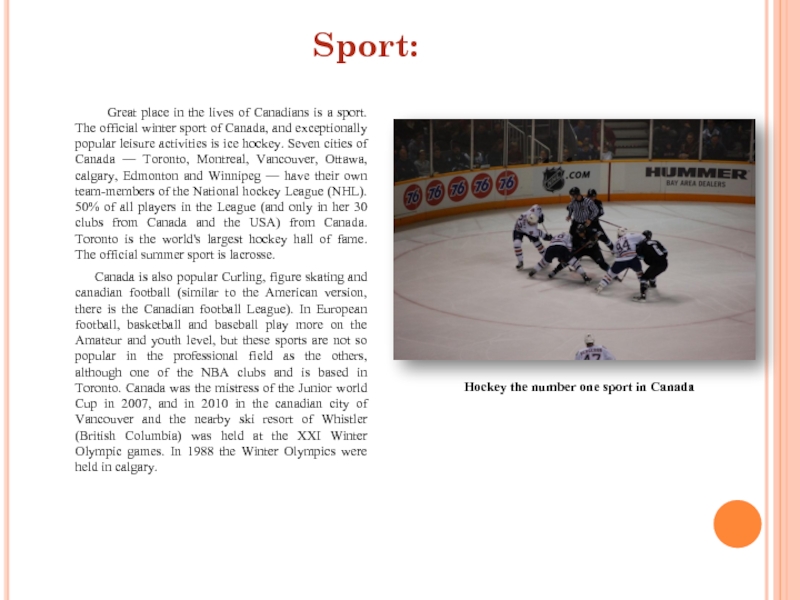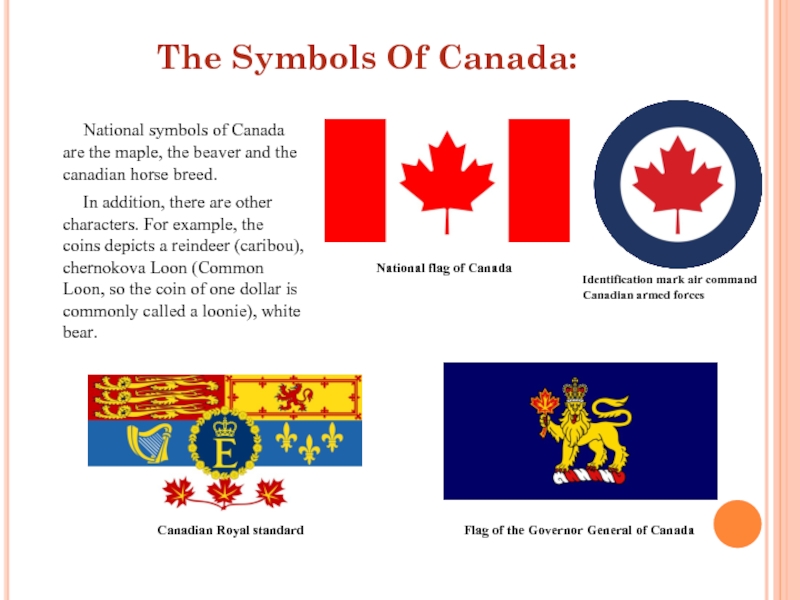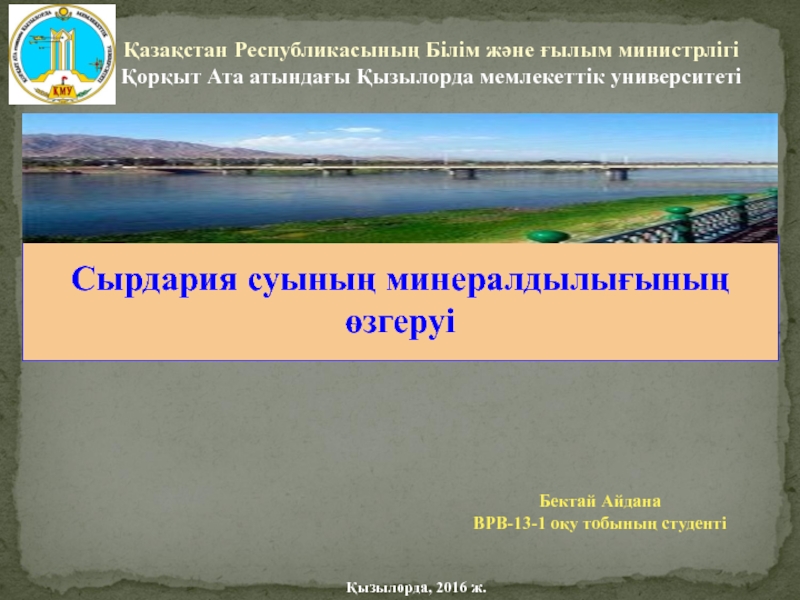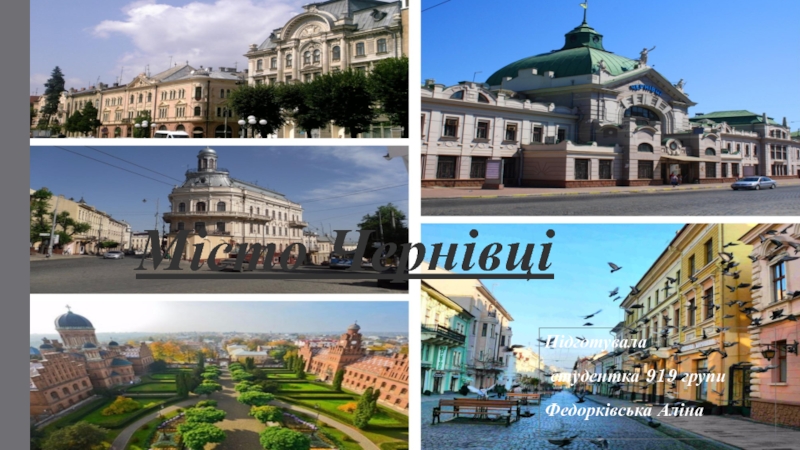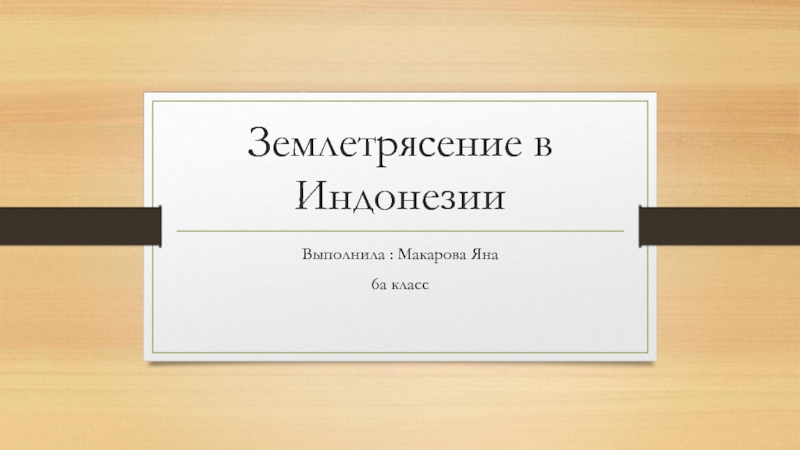- Главная
- Разное
- Дизайн
- Бизнес и предпринимательство
- Аналитика
- Образование
- Развлечения
- Красота и здоровье
- Финансы
- Государство
- Путешествия
- Спорт
- Недвижимость
- Армия
- Графика
- Культурология
- Еда и кулинария
- Лингвистика
- Английский язык
- Астрономия
- Алгебра
- Биология
- География
- Детские презентации
- Информатика
- История
- Литература
- Маркетинг
- Математика
- Медицина
- Менеджмент
- Музыка
- МХК
- Немецкий язык
- ОБЖ
- Обществознание
- Окружающий мир
- Педагогика
- Русский язык
- Технология
- Физика
- Философия
- Химия
- Шаблоны, картинки для презентаций
- Экология
- Экономика
- Юриспруденция
A brief statement about Canada презентация
Содержание
Слайд 2A brief statement about Canada:
Official name: Canada.
Official languages: English, French.
Capital: Ottawa.
Largest
Form of government: parliamentary monarchy.
Area: 9 984 670 km2.
Population: 36 048 52 people.
Currency: canadian dollar.
Слайд 3 Geographical data:
Слайд 4
Average temperatures in January and July are different for each area. Winter can be very severe in some regions of the country, the average monthly temperature can reach -15 C in the southern part of the country, and sometimes -45 C with strong icy winds. The minimum temperature ever observed in Canada is -63 C (Yukon). Each year, the snow level can reach several hundred inches (for example, in Quebec the average of 337 cm). The coast of British Columbia, especially Vancouver island, is an exception and enjoys a mild climate with mild and rainy winters. Summer temperatures can reach +35, +40, given the index of humidity.
Charlottetown (Prince Edward Island) in the winter
Слайд 5 Administrative division:
Слайд 6 The population:
Statistics of population from 1867 to 2016
Слайд 7 Languages Canada:
The population of Montreal is predominantly Francophone, but there is a significant English-speaking community. According to the census 2006, the French language uses 52.6% of residents of the city of Montreal with a threatening tendency of turning into a minority language.
Слайд 8
Canadians profess a large number of religions. According to the last census, 77.1 percent of Canadians consider themselves Christians, most are Catholics (43.6% of Canadians). The most important Protestant Church — the United Church of Canada (which includes most of the Calvinists (the part of the Presbyterians and all Congregationalist and Methodist); approximately 17 % of Canadians do not associate themselves with any religion, and the rest of the population (6.7 per cent) profess other religions (Judaism, Islam, Buddhism, Hinduism and Sikhism). Over the last 10 years the Muslim population of Canada increased by 82% from approximately 579 thousand people in 2001 to over 1 million in 2011. Muslims make up 3.2 percent of Canada's population, while in 2001 they accounted for only 2 %. Two-thirds of canadian Muslims live in the three largest cities — Toronto, Montreal and Vancouver. Toronto is home to the largest Muslim community — 424 thousand people in Montreal and Vancouver, respectively, more than 221 thousand and $ 73 thousand 200 people. It is the fastest growing community in Canada celebrates ABNA.
Cathedral of the Immaculate conception of the blessed virgin Mary in Kingston.
Слайд 9
Great place in the lives of Canadians is a sport. The official winter sport of Canada, and exceptionally popular leisure activities is ice hockey. Seven cities of Canada — Toronto, Montreal, Vancouver, Ottawa, calgary, Edmonton and Winnipeg — have their own team-members of the National hockey League (NHL). 50% of all players in the League (and only in her 30 clubs from Canada and the USA) from Canada. Toronto is the world's largest hockey hall of fame. The official summer sport is lacrosse.
Canada is also popular Curling, figure skating and canadian football (similar to the American version, there is the Canadian football League). In European football, basketball and baseball play more on the Amateur and youth level, but these sports are not so popular in the professional field as the others, although one of the NBA clubs and is based in Toronto. Canada was the mistress of the Junior world Cup in 2007, and in 2010 in the canadian city of Vancouver and the nearby ski resort of Whistler (British Columbia) was held at the XXI Winter Olympic games. In 1988 the Winter Olympics were held in calgary.
Hockey the number one sport in Canada
Слайд 10 The Symbols Of Canada:
In addition, there are other characters. For example, the coins depicts a reindeer (caribou), chernokova Loon (Common Loon, so the coin of one dollar is commonly called a loonie), white bear.
National flag of Canada
Canadian Royal standard
Flag of the Governor General of Canada
Identification mark air command Canadian armed forces
